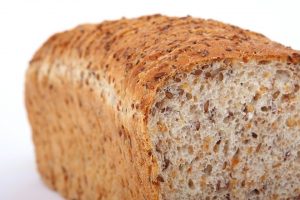 One of the most interesting parts of this week’s readings was the video on order. The video described order as the less information it takes to describe something the more ordered it is. For example, in the video there are two metal bars one hot and one cold. The hot bar has molecules that are moving erratically while the cool bar has molecules that are aligned and still. Therefor it is easier to describe the cool bar which according to our definition makes it the more ordered. However, this definition of order does not tell us just by looking at something if it is ordered or not. For this definition to be effective you need two of the same or similar systems. This way you can compare the two and say one system is more ordered than the other, because it takes less information to describe. Because of this we can only see relative order in systems.
One of the most interesting parts of this week’s readings was the video on order. The video described order as the less information it takes to describe something the more ordered it is. For example, in the video there are two metal bars one hot and one cold. The hot bar has molecules that are moving erratically while the cool bar has molecules that are aligned and still. Therefor it is easier to describe the cool bar which according to our definition makes it the more ordered. However, this definition of order does not tell us just by looking at something if it is ordered or not. For this definition to be effective you need two of the same or similar systems. This way you can compare the two and say one system is more ordered than the other, because it takes less information to describe. Because of this we can only see relative order in systems.
As an example, imagine you are going through the farmers market and find a loaf of bread. You ask the farmer at the stall what ingredients are in the bread. He replies whole wheat that he mills himself, salt, sourdough, and water. Now we can see a system surrounding the bread with the individual components all coming together to arrive at the bread you are about to purchase. However, if I asked if this system is ordered or not? You could not necessarily answer based on the definition provided.
Now if we add another loaf of bread from the supermarket, and we look at its list of ingredients, it probably has significantly more than the farmers bread (the least I could find at QFC was 8 ingredients). Since we now have two similar systems we can use the definition we have been provided. Which allows us to say the farmers bread is produced by a system that is more ordered than the supermarket bread since it takes less information to describe.
What this means for the world food system is that in general products we find in the supermarket are produced by systems that are less ordered than products we either grow ourselves or buy directly from producers. And as we have seen food produced by systems as disordered (comparatively) as the industrial food system are less healthy in general than those produced by more ordered systems.

I think you make an excellent point about the necessity of a comparison variable to determine if an object is “ordered” or not. I believe it would also be good to consider the production of the bread though and how that differs between the farmer’s market bread and the QFC bread. Although the farmer uses fewer ingredients the QFC producer has machines doing the work creating a perfected, although processed, result compared to the farmer’s homemade process that lends itself to various shapes, baking thoroughness, and proofing. Isn’t the QFC production more ordered than the farmer’s? Or would we only consider the finished singular product of the farmer’s loaf versus the QFC loaf?
Hi Rio,
Thank you for pointing this out, you are absolutely right the piece of bread itself would be more ordered in the QFC bread, which is something I didn’t consider . However,I still believe that if we look at the food system that brings that bread to our table either through the farmers market or the super market, we will find that the supermarket bread with all the different groups involved will be the more difficult to describe. Its an interesting contradiction that the more disordered system can produce a more ordered product.